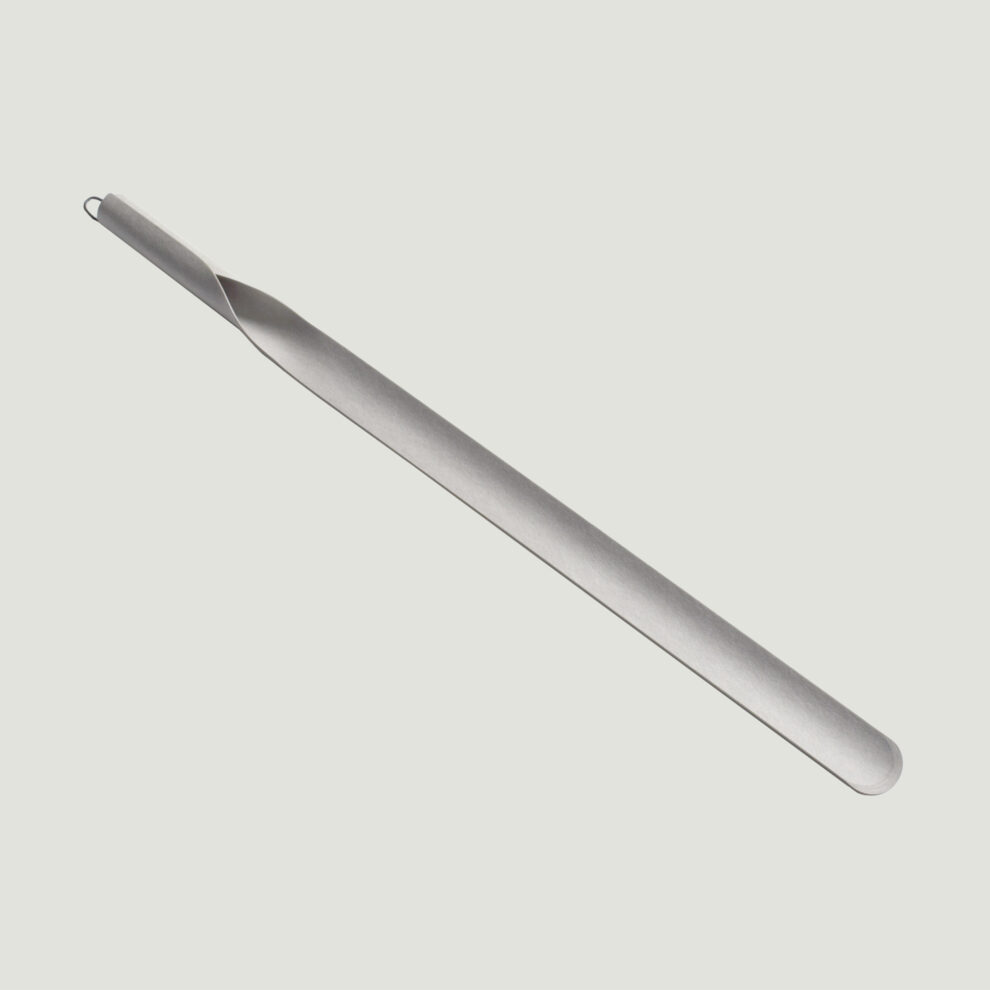SHOEHORN
Vulcanized fiber is used as a material, which is lightweight and softly bendable, yet strong and impact resistant, Our achievements include both its design and superior comfort when putting on shoes.
Designer Shigeichiro Takeuchi tells the story of its development.
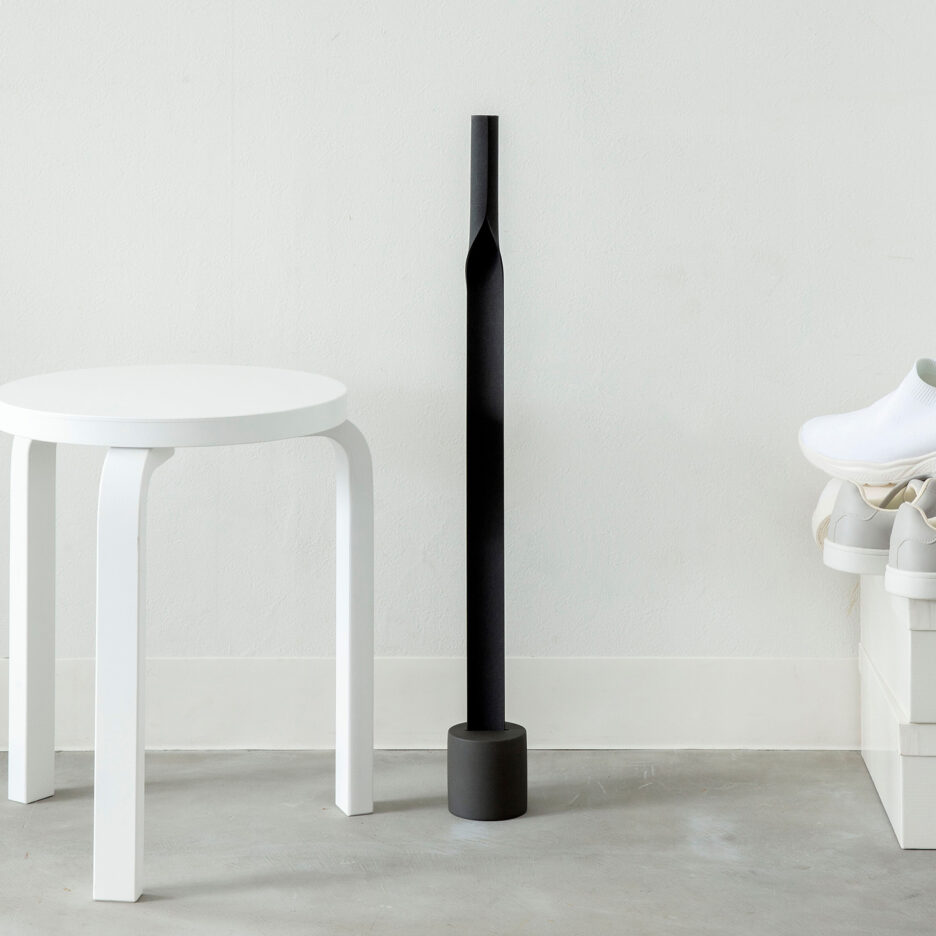
A shoehorn that is both comfortable to use and beautiful.
SHOEHORN, clad with a dignified atmosphere, is not only well designed, but is also designed to be comfortable to use when putting on shoes.
The material is vulcanized fiber made from cotton and wood pulp, and its softness and warmth highlight the SHOEHORN’s ease of use and beauty.
PRODUCT STORY Vol.10
—— Please tell us how and why you developed this shoehorn.
It all started with a request from one of our clients. When we visited and asked them, “What kind of item would you like to have?” The answer was “a shoehorn. Wooden shoehorns chip when dropped, or crack when force is applied to them. Metal ones are heavy, cold, and hard. Plastic ones look cheap. I want a beautiful shoehorn made of a different material and with a better design.”
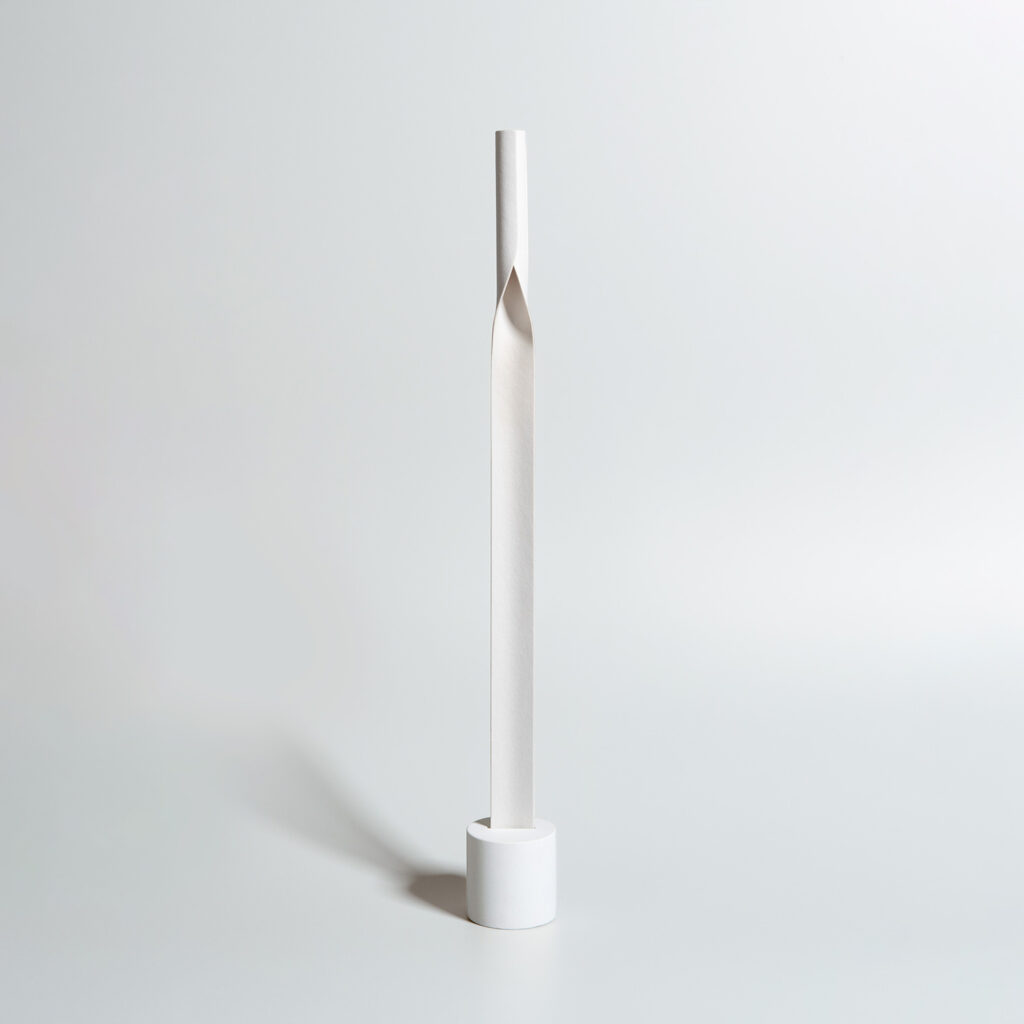
I myself often stay in hotels on business trips and usually find only plain wooden or metal shoehorns. Most of the shoehorns that I see in private homes are mostly made of plain plastic. It is not that there are no shoehorns with beautiful designs that catch the eye, but they are not widely available…I thought so too.
—— What makes this shoehorn different from other ordinary ones is the material?
You are right. The base which the shoehorn is inserted into is made of concrete, but the body of the shoehorn is made of a material called “vulcanized fiber.” Our encounter with this material was also a major catalyst in the development of SHOEHORN.
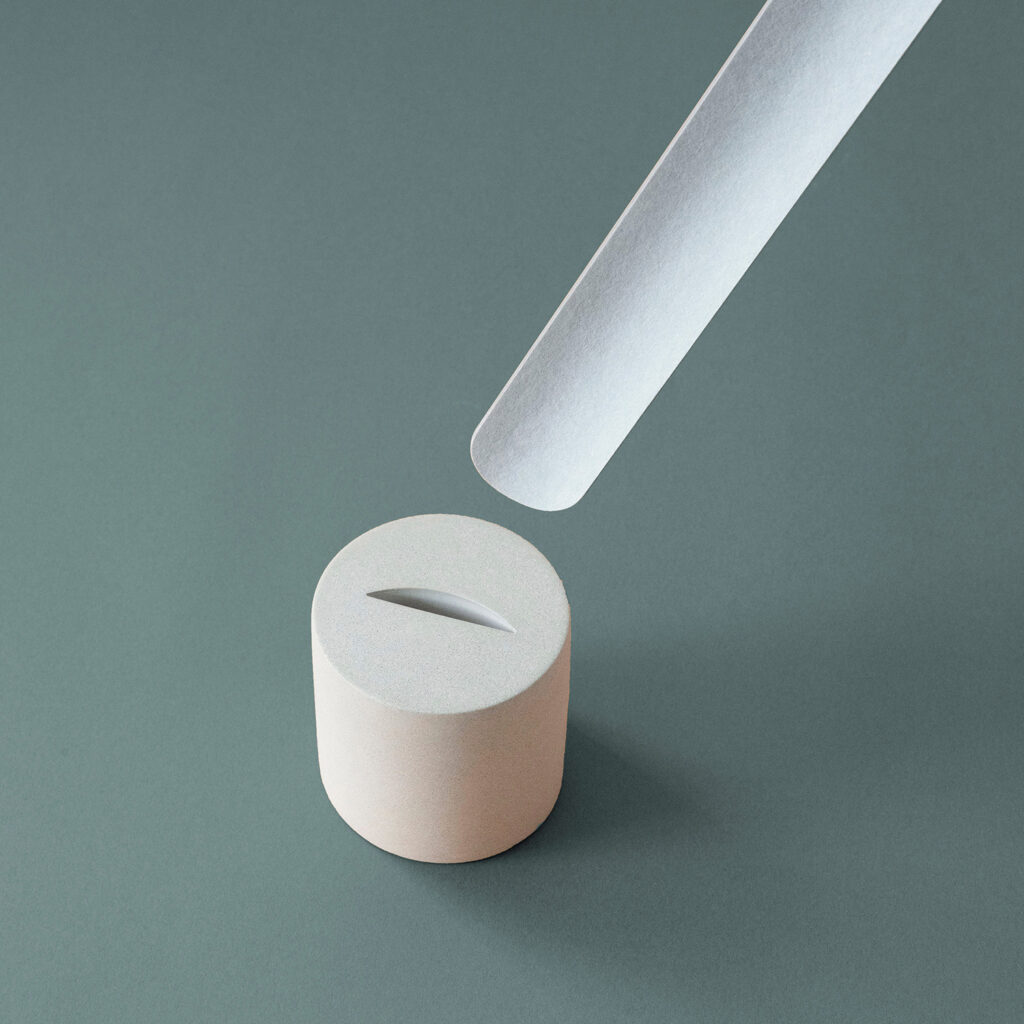
—— Vulcanized fiber…sounds like an unfamiliar material.
Actually, vulcanized fiber is not a particularly new material; its history is quite old. It is a material made from cotton pulp and wood pulp, and was originally invented in the U.K. around the middle of the 19th century. After that it was developed in the United States as a material for industrial parts. It seems to have been created before plastic.
In fact, vulcanized fiber is used in many of the things we see around us. For example, suitcases and make-up boxes are easy examples. It is also used as a material for kendo suits and for the blades of plastic wraps for food. It may seem surprising, but it is quite familiar, isn’t it?
—— I never paid attention to it, but the white blade on the box of plastic wrap is vulcanized fiber. Can you tell us a little more about this material?
Vulcanized fiber is also called “the world’s stiffest paper.” It has excellent toughness and can be molded to achieve a supple “bend.” It is also a lightweight material with high impact resistance.
This seemed like the perfect material for a shoehorn. It is more robust than wood and there is no risk of splitting. In addition, it is definitely lighter than steel. There are many advantages.
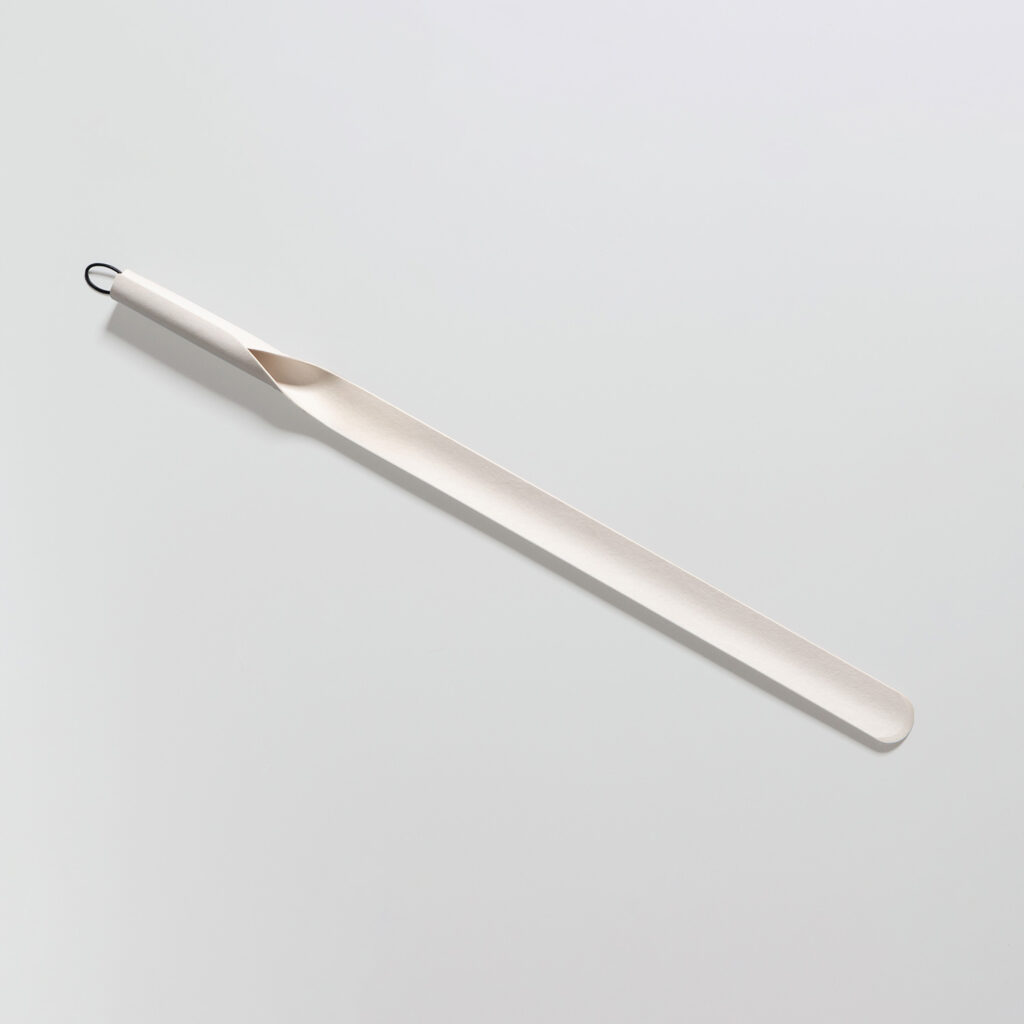
—— It is a material that combines many advantages, rather like killing two birds with one stone.
In addition to being the perfect material for shoehorns, vulcanized fiber is also excellent from a sustainability standpoint.
The fact that the material is made from cotton pulp or wood pulp means that it is biodegradable and earth-friendly. In other words, it returns to the soil. I thought it was new because it is a natural material that fits perfectly with today’s current trends, but it is interesting that it was developed more than 150 years ago.
—— Please be more specific about how the characteristics of the materials are fully utilized for the SHOEHORN.
Earlier, we talked a bit about the ability to mold and thus achieve a supple “bend.” This characteristic may be the most important one for SHOEHORN.
Vulcanized fiber can “bend” in a way that wood and metal cannot. Since a shoehorn is a tool that helps people put on shoes comfortably, it is important to make it easy to use. In other words, to improve the ease of putting on shoes. In this case, the “bend” plays a major role. As you will see when you actually use the SHOEHORN, you can really fit the heel into the shoe smoothly.
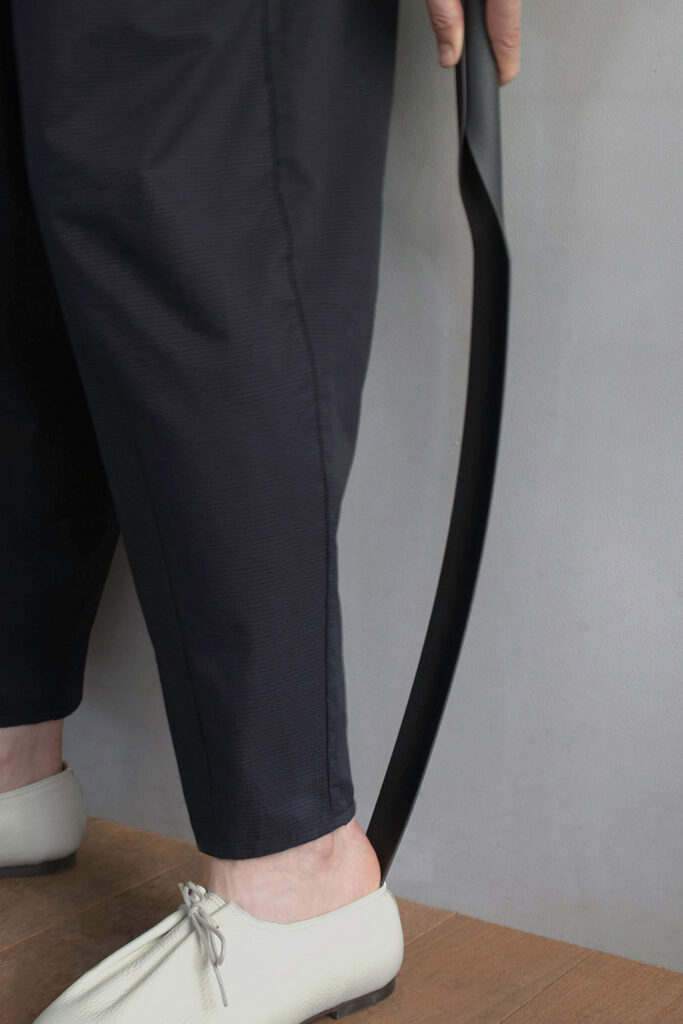
—— The thinness of the shoehorn, coupled with its elasticity, allows me to put on my shoes with less stress than with other shoehorns.
Also, we are particular about this curved surface. In fact, each piece is bent by hand by craftsmen. The curved surface, which is straight and yet follows the heel, continues to the handle, giving it a very soft look. We also did not compromise on the angles and overlapping of the handles. This may have caused some difficulty for the craftsmen….
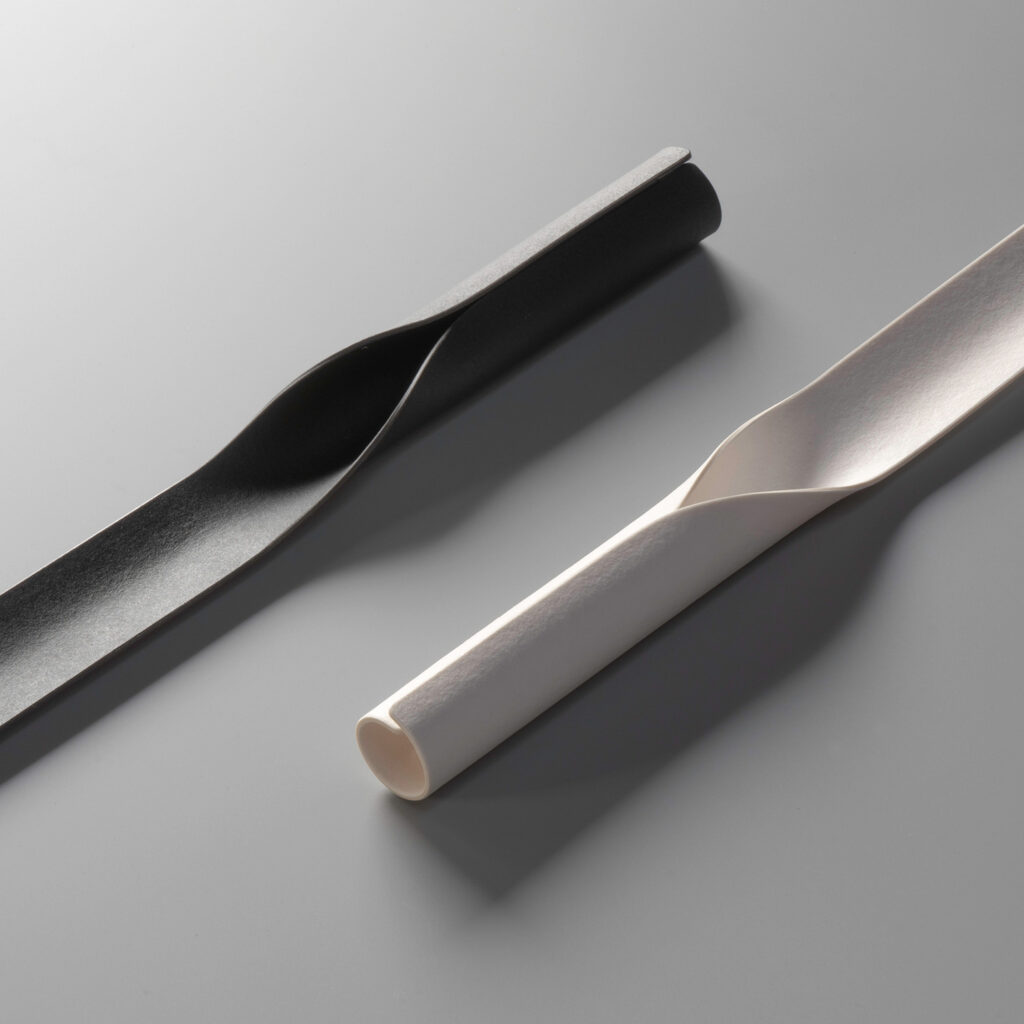
—— The lines of this shoehorn are indeed excellent. It also gives a very organic impression.
Speaking of organic, I would like you to actually touch and feel the texture of vulcanized fiber. I myself really like the texture of the material itself. The advantage of this material is that you can feel a gentle warmth when you touch it.

—— After listening to this story, I realized that SHOEHORN’s appeal is not only in its design. It is a shoehorn that has many points worth mentioning.
I think you can see the beauty of the design in its appearance, but I think this shoehorn has many merits that are not easily conveyed. Or rather, cannot be conveyed by a photograph. I would like you to actually touch and use the shoehorn to experience its functionality and feel of the material. I especially recommend MOHEIM’s SHOEHORN to those who use shoehorns on a daily basis.
Item information
